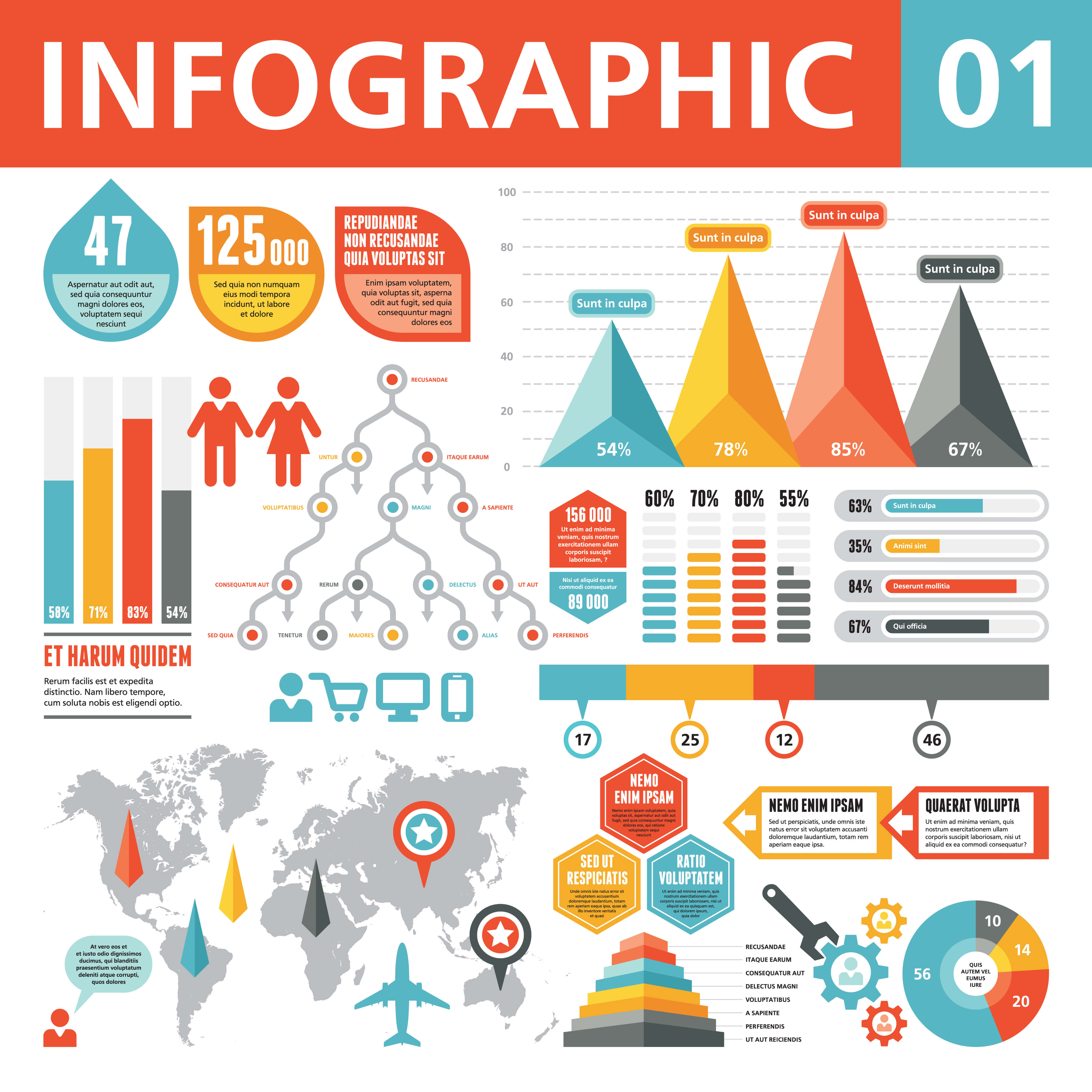
Since people tend to form a sense of time spatially, a visual like a Timeline Infographic can offer assistance to make a clearer picture of a time period. In case you'd like to visualize the history of something, highlight vital dates, or give an overview of events (that can be project timelines), Timeline Infographics is your infographic of choice. This is the best infographic for clearly communicating a new or specialized concept, or to give an overview of a topic. What are the Different Types of Infographics? If your target audience does not share the same language as you, translating it to that language might be worth it. So, besides presenting the results, an infographic contains the "story" of your information. Infographics are one productive method of combining the best text, pictures, and configuration to speak to complex information that recounts a story. That standard prompted oversimplified representations that zeroed in only on featuring a summarized point. For a long time, visualizations of data were controlled with a known rule: The denser the data, the more that data should have been streamlined for general audiences. “Why are infographics important,” “what is the importance of infographics?'' are the most common searches for terms relating to infographics. Pairing complementary colors in your headlines and graphics will make the information pop. Every infographic should have a beginning, middle, and end that provides context, the facts or data, a round-up of information.ħ. If an infographic has too much text that is competing with the visuals, the audience will be overwhelmed and miss important information.Ħ. You are competing for attention in a digital space. If your stats are on something a little melancholy, use more somber colors.Ĥ. If you are portraying exciting stats on pop culture, your colors should reflect this. Bold colors that are thematic of your message or your brand. The most important facts or information should be a central figure on your infographic.ģ. Make sure your stats are recent and that you cite them if they are from an external source. A title that is both intriguing and descriptive.Ģ. The following ingredients will make your infographic stand out from the mass of information online:ġ. An infographic appeases the shortened attention span of consumers and should be easy to digest.

However, if you want the audience to interpret the message and have the data as the primary focus, an infographic would be the right choice.Īdding the right ingredients in the right proportion will increase the likelihood that your infographic will be absorbed and circulated. Then, using a poster would be the best option. What’s an infographic example and when should we use them, you may ask? Let’s say we have a predetermined message to deliver and you have data to support it. Infographics help us to see the presented data in a new way and give us a new insight for problem solving and understanding. They are not meant to be read, but to be studied, analyzed, and explored.

Infographics tend to be abstract visuals. They are typically vertical in orientation and are supposed to be read from top to bottom. It usually takes 10 seconds to absorb the information of a poster. While infographics also use text to describe the data, posters adapt iconic-type graphic components for visual design appeal. On the other hand, when creating infographics symbols, marks or visual elements are used. Posters address information in different categories using numbers or words to represent quantitative data. Contrarily, posters gather various types of information about a subject and tell it in an engaging aspect.

Infographics consist of charts, images, and some text that explains the topic in a straightforward way. However, they differ in design and purpose. Infographics are confused with posters from time to time. What is the Difference Between an Infographic and a Poster? An infographic is defined as visualized information that is clear and quickly absorbable.

Infographic is actually two words blended together, which are “information” and “graphic”.


 0 kommentar(er)
0 kommentar(er)
